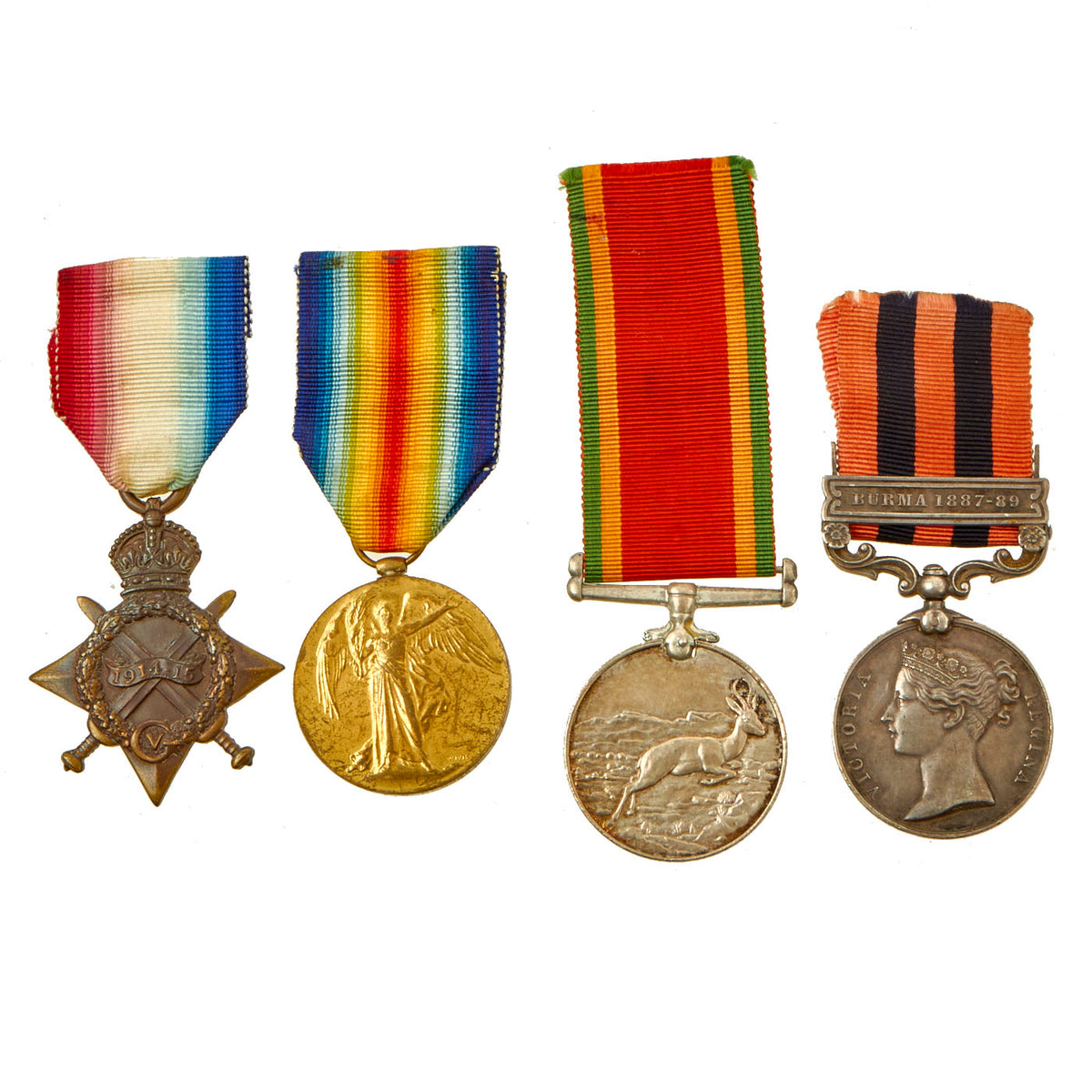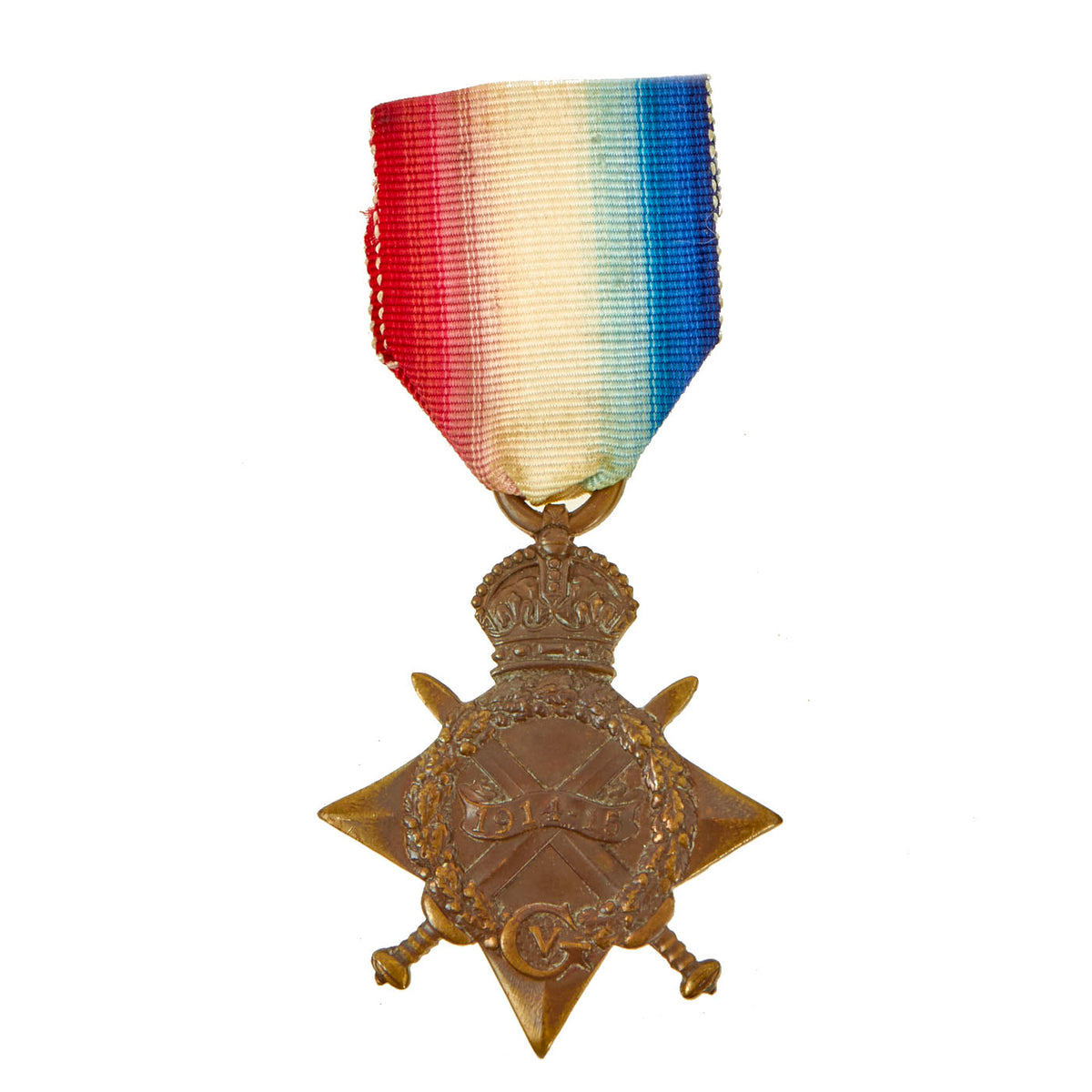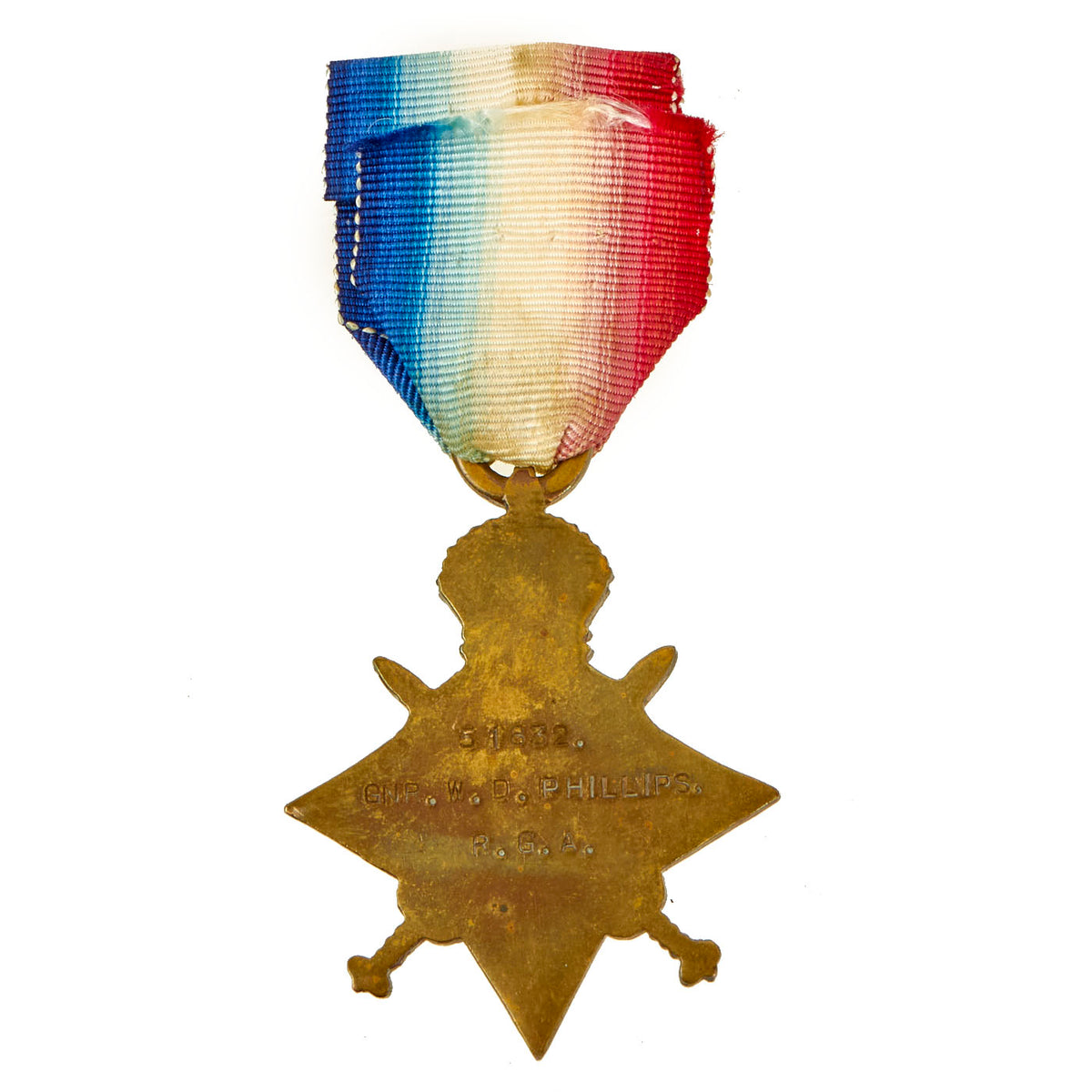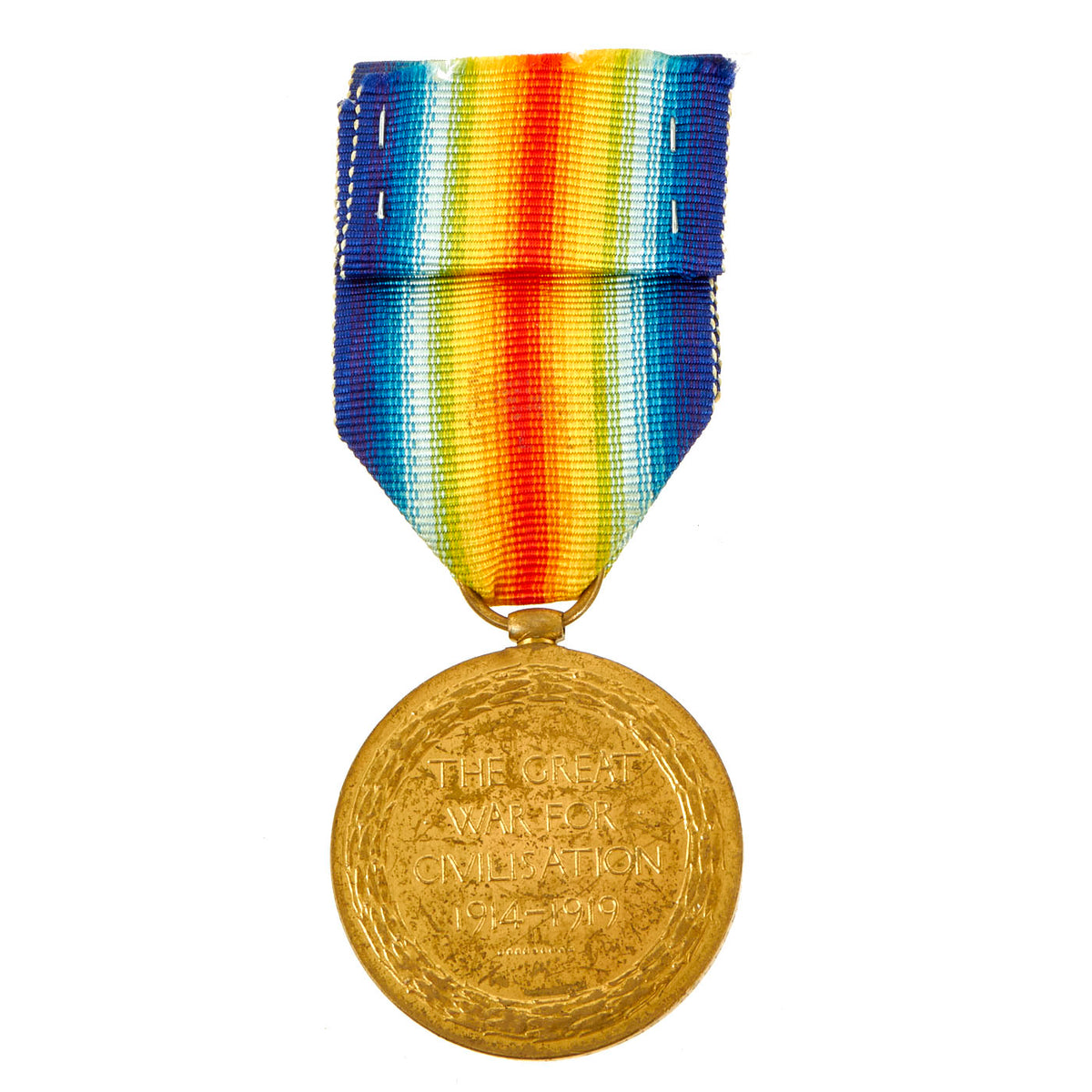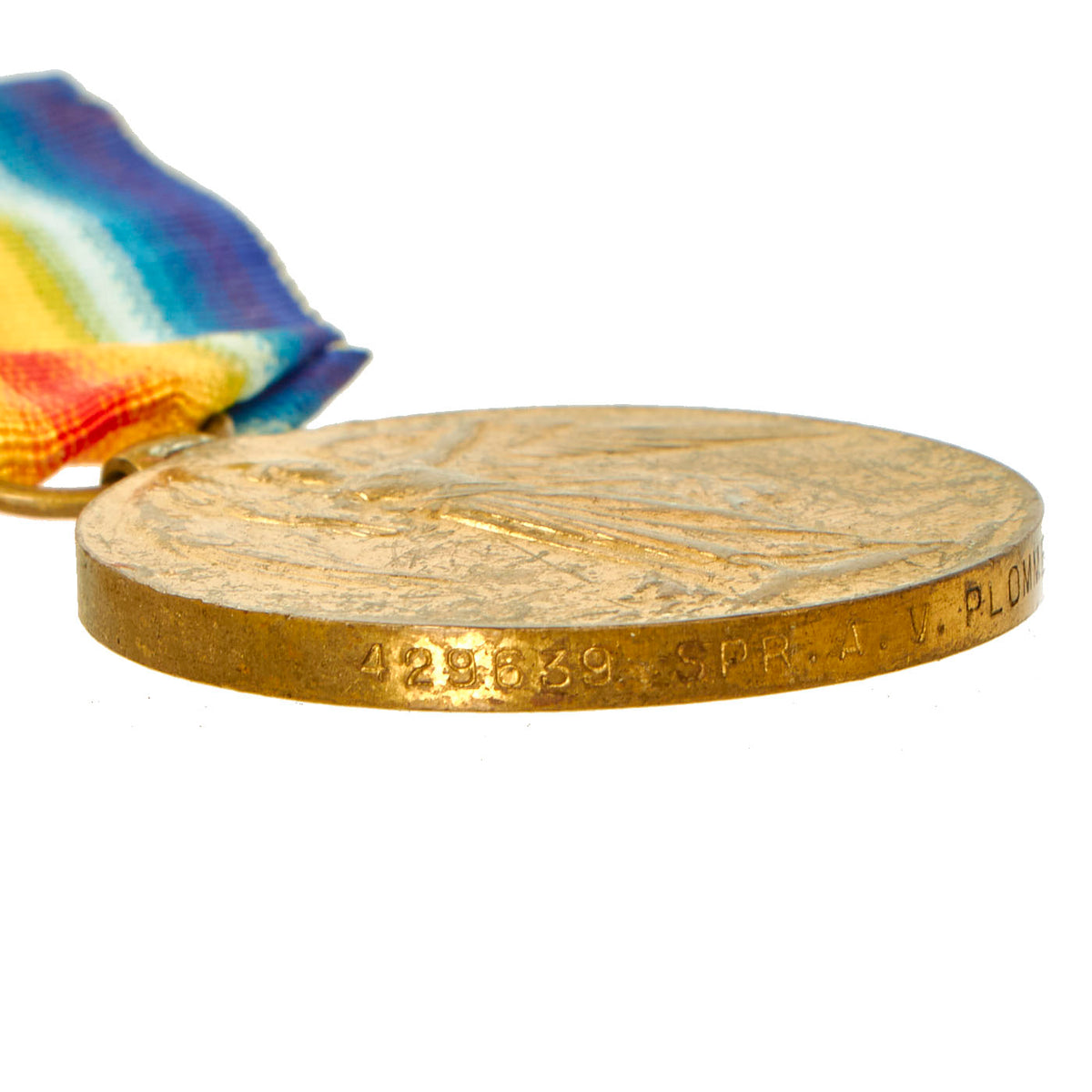Original British and Commonwealth Nations Pre-WWI to WWII Name Engraved General Service Medal Lot – 4 Medals Original Items
$ 395,00 $ 118,50
Original Items: Only One Group of 4 Available. Now this is a rare opportunity! There are 4 genuine British medals,all of which are name engraved, making for a wonderful research opportunity.
During the 17th and 18th centuries the service of the ordinary British soldier was simply rewarded with a state pension. During this time, due to the suffering and actions of the soldiers on both sides during the English civil war, public opinion of soldiers was quite low. Usually, only the most desperate volunteered for military service and in some cases it was the only alternative to a prison sentence. Public opinion of the British Army slowly began to change after the Napoleonic Wars (1799 to 1815) due to the heroic actions of soldiers and their officers. However, during this time, medals were only given to highly promoted officers and members of the aristocracy for their services.
The first British Army medal awarded to ordinary soldiers was the Waterloo Medal, issued around 1816-17. This was given to every individual British soldier who could prove that they were present during the campaign against Napoleon in which the British Army, alongside their Dutch and German allies, suffered horrific loss and suffering whilst performing feats of heroism. The medal was unique as not only was it the first of its kind but each soldier or officer who received it had their name stamped into the medal, recognising them individually. Around 39,000 of these medals were issued to the men who applied for them. The material chosen for the medal was Silver, which alongside Bronze, would be used widely for many medals in the coming century.
The Medals Included In This Lot:
– 1914–15 Star: The 1914–15 Star is a campaign medal of the British Empire which was awarded to officers and men of British and Imperial forces who served in any theater of the First World War against the Central European Powers during 1914 and 1915. The medal was never awarded by itself and recipients also received the British War Medal and Victory Medal.
Awarded To: Gunner W.D. Phillips (51832) Royal Garrison Artillery
– WWI Victory Medal (United Kingdom): The Victory Medal (also called the Inter-Allied Victory Medal) is a United Kingdom and British Empire First World War campaign medal.
The award of a common allied campaign medal was recommended by an inter-allied committee in March 1919. Each allied nation would design a ‘Victory Medal’ for award to their own nationals, all issues having certain common features, including a winged figure of victory on the obverse and the same ribbon. Fourteen countries finally awarded the medal.
Awarded To: SAPPER A.V. PLOMMER (429639) Canadian Engineers
– WWII Africa Service Medal: The Africa Service Medal is a South African campaign medal for service during the Second World War, awarded to members of the Union Defence Forces, the South African Police and the South African Railways Police. The medal was originally intended for service in Africa, but it was later extended to cover service anywhere in the world.
Awarded To: J.A. Fenn (279711)
– India General Service Medal (1854) With Burma 1887-89 Clasp: The India General Service Medal (1854 IGSM) was a campaign medal approved on 1 March 1854, for issue to officers and men of the British and Indian armies. It was awarded for various minor military campaigns in India and nearby countries, between 1852 and 1895.
In 1852 Lord Dalhousie had suggested a general service medal for smaller Indian campaigns, in order to limit the number of individual medals awarded.
Indian Army units made up the majority of forces present for nearly all campaigns. While the expeditions covered by the medal included few formal battles, most were undertaken in difficult terrain against determined resistance from local tribesmen.
In 1895, the India Medal was authorized to reflect service in further Indian expeditions, replacing the 1854 General Service Medal.
Awarded To: JEMADAR MANGAL SINGH (1322) SHWEBO BATTALION MILITARY POLICE
A wonderful assortment of medals that make for a perfect research project! Comes more than ready for display.
Fast Shipping with Professional Packaging
Thanks to our longstanding association with UPS FedEx DHL, and other major international carriers, we are able to provide a range of shipping options. Our warehouse staff is expertly trained and will wrap your products according to our exact and precise specifications. Prior to shipping, your goods will be thoroughly examined and securely secured. We ship to thousands clients each day across multiple countries. This shows how we're dedicated to be the largest retailer on the internet. Warehouses and distribution centres can be located throughout Europe as well as the USA.
Note: Orders with more than one item will be assigned a processing date depending on the item.
Before shipping before shipping, we'll conduct a thorough inspection of the items you have ordered. Today, the majority of orders will be delivered within 48 hours. The delivery time will be between 3-7 days.
Returns
The stock is dynamic and we cannot completely manage it because multiple stakeholders are involved, including our factory and warehouse. So the actual stock may alter at any time. It's possible that you may not receive your order once the order has been made.
Our policy is valid for a period of 30 days. If you don't receive the product within 30 days, we are not able to issue a refund or an exchange.
You can only return an item if it is unused and in the same state as the day you received it. You must have the item in its original packaging.
Related products
Uncategorized
Armored Burgonet Helmet & Polearm from Scottish Castle Leith Hall Circa 1700 Original Items
Uncategorized
Uncategorized
Uncategorized
Uncategorized
Uncategorized
Uncategorized
Armoured Fighting Vehicles of the World: AFVs of World War One (Hardcover Book) New Made Items
Uncategorized
Uncategorized
Australian WWII Owen MK1 Machine Carbine SMG Custom Fabricated Replica with Sling Original Items
Uncategorized
Uncategorized
Uncategorized
Uncategorized
Uncategorized
Uncategorized
Uncategorized
Uncategorized
Angolan Rebel 1970s era 60mm Inert Display Mortar from Angolan Civil War Original Items
Uncategorized
Uncategorized
Band of Brothers ORIGINAL GERMAN WWII Le. F.H. 18 10.5cm ARTILLERY PIECE Original Items
Uncategorized
